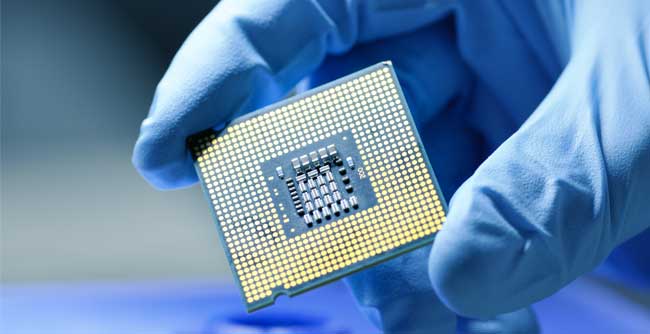Six months ago we wrote about the effect microchips were having on the car industry and as we continue to see the long-term impact of this and Covid-19 we wanted to give you an update on new car lead times because of microchips.
Microchip Shortage and the Impact on New Cars
There is currently a worldwide shortage of semiconductor microchips used in cars which has an impact on the production of new cars in terms of both time frame and missing parts which in turn affects the time it takes for the car to arrive with its new driver.
Why Does a Car Need Microchips?
Modern cars are much more high tech than the cars of the past like the Ford Model T and they rely heavily on the electronics in the vehicle.
A microchip contains several electronic circuits that allow electronic devices and the functions within them to work.
In a car, features like the touch screen infotainment centre, driving systems such as blind spot detection and lane keeping assist and expected essentials like an electronic mileometer – microchips are essential for them all.

Why Is it Taking So Long to Get Them?
You’ve probably heard of the microchip shortage as it’s been occurring for several months now and there’s a number of reasons why we’re currently experiencing a shortage of microchips including:
- Covid-19 impact on the demands
- Covid-19 caused factory closures
- A fire in one of the top producing microchip factory
- Storms causing power cuts and damage to other factories
- Microchip production time
Covid and Microchips
During the early stages of the current pandemic there were national lockdowns around the world in various countries and this also affected vehicle manufacturers and parts producers, like microchips.
As car plants weren’t making cars, they put a halt to a lot of the parts orders including microchips. At the same time other companies who were seeing a rise in demand for their products such as tablet and laptop manufacturers increased their orders for microchips. Combined this meant that when car factories did reopen and came to reinstate their microchip orders they were further down the order wait list.
Added to this because of their complexity it is only possible to make one type of microchip at a time and so with consistent and higher demands and higher retail prices technology microchips were prioritised by chip manufacturers during the beginning of the pandemic.
Factory Closures Due to Fire and Storms
In mid-February Texas suffered from some catastrophic storms, and this had an impact for people and businesses across the state – including microchip producers Samsung, Infineon Technologies and NXP.
Texas is the largest producer of microchips within the US, who produce 12 % of global microchips, and the closure of plants due to power cuts caused by the storm meant that the industry there was halted for several days. Storm damage, including flooding, meant that production levels when they did reopen was at a reduced capacity for a long time.
Then in March one of the largest suppliers of microchips, Renesas, had a fire in one of their Japanese factories.
The fire caused damage to their Naka based fabrication plant, which specialised in 300 mm wafer chips making it one of the most advanced facilities in the industry, and eleven of the manufacturing equipment units were damaged in the blaze.
Not only did the damaged units reduce the production capacity but because of the conditions that microchips require the smoke and fire damage meant that reopening was a longer, more complex process than just replacing the machinery.
Both plants are now back up and running, though this may still be at a reduced capacity.
Microchip Production Time
Microchips are small and delicate pieces of technology and so they need dedicated factories that are ultra-clean, with zero dust and static electricity as this can corrupt the chip and render it unusable.
This level of clean environment means that the time it takes to make a chip is lengthy and the cost of production can be expensive.
To make some of the semiconductor chips required by cars it can take as long as six months.
What’s Been Affected?
The shortage is a global one which means that every car manufacturer is affected.
For some this means a reduction in the features they can provide across their entire catalogue, such as no longer offering ambient lighting, driver support systems, digital driver screens, digital dials and more.
Others have chosen to cut the number of models they are producing or even put a pause on specific models. Reducing the number of models requiring chips means you don’t have to restrict as many options on the vehicles you are producing.
If you’re leasing or thinking of leasing with Xcite Car Leasing then we will obviously keep you updated on any change of features and the lead times as we’re advised of any changes.
When Will the Microchip Shortage End?
The current shortage unfortunately shows no signs of ending soon and is expected to last well into next year with some projections putting it at early 2023 when production levels will have returned to pre-pandemic levels and the backlog cleared.
At the minute we can’t provide an exact date or even an estimate of when the shortage will end but we don’t forsee it being solved any time in the next few months.
Lead Times for Factory Ordered Cars
Right now, we are seeing unprecedented conditions affecting the production of new vehicles not just due to the shortage of microchips though this is a major contributor to the delays.
It is affecting every manufacturer and all the models within their catalogue but as mentioned above the way they are handling it varies so particular models might be available slightly earlier, or if you are happy to accept a vehicle without all the features then manufacturers may be able to deliver this earlier as well.
Please note that even if you do opt for a car with reduced options delivery may still be a couple of months due to the other factors impacting delivery lead time.
At the minute nearly all new factory orders are taking around six to ten months to arrive with drivers from the point of order with the factory. This timeframe may be slightly more or less due to ongoing issues that do not have a set end date.









Leave a Comment